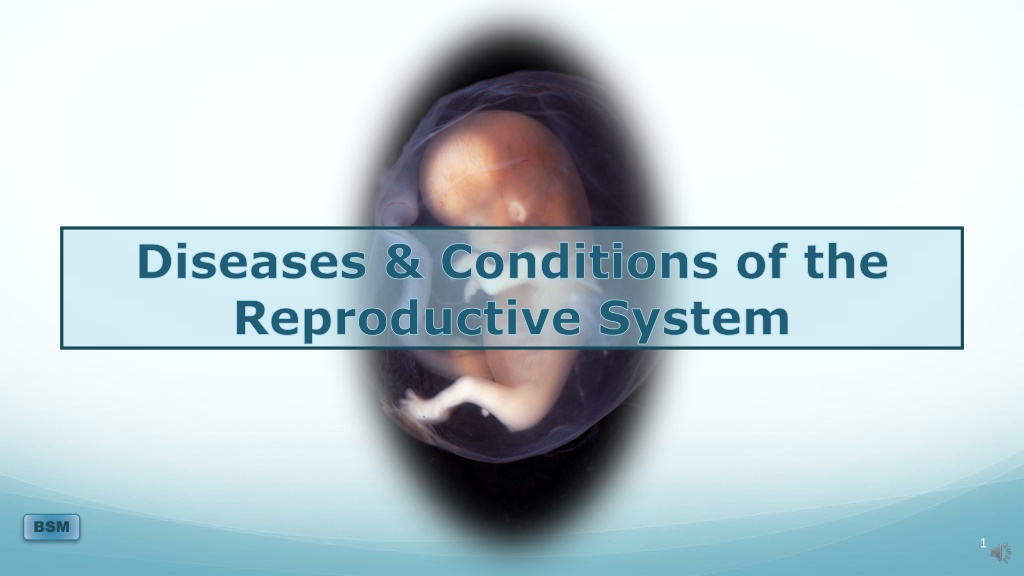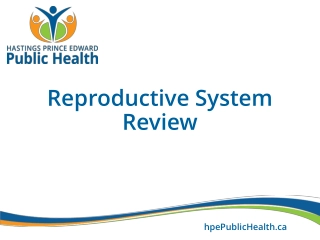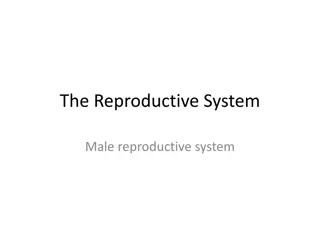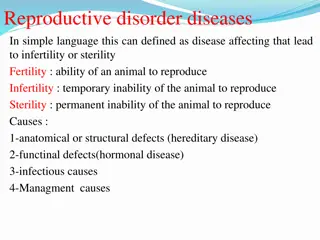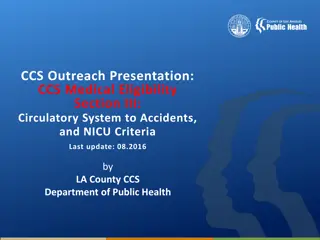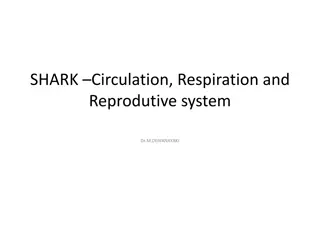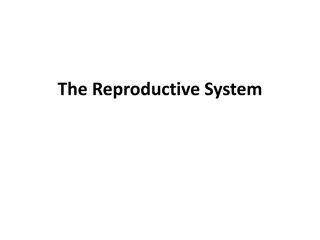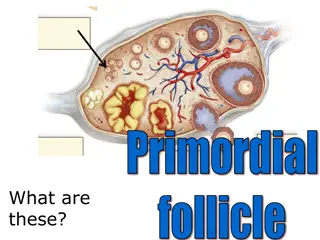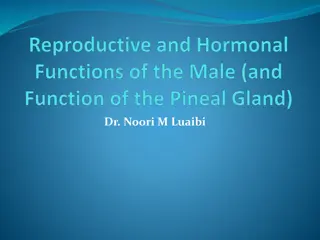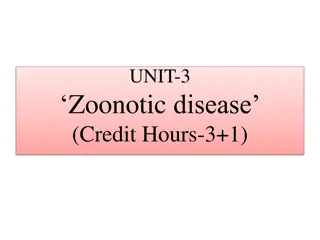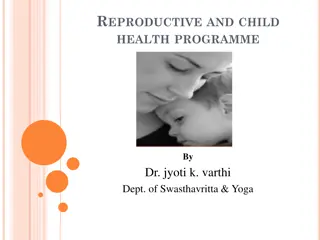Reproductive System Diseases and Conditions Overview
This comprehensive overview covers various diseases and conditions of the reproductive system, ranging from sexually transmitted infections like syphilis and gonorrhea to reproductive issues like ovarian cysts and infertility. It also discusses conditions such as pre-eclampsia and menopause. The information provided sheds light on symptoms, causes, and treatments for these reproductive health concerns.
Download Presentation

Please find below an Image/Link to download the presentation.
The content on the website is provided AS IS for your information and personal use only. It may not be sold, licensed, or shared on other websites without obtaining consent from the author. Download presentation by click this link. If you encounter any issues during the download, it is possible that the publisher has removed the file from their server.
E N D
Presentation Transcript
Diseases & Conditions of the Reproductive System BSM 1
Syphilis A sexually transmitted disease caused by *spirochete bacterium. *Treponema pallidum BSM 2
Diseases & Conditions Continued1 Trichomonas: Called trick caused by a single-celled organism that is a member of the protozoa family of micro-organisms. When this organism infects the vagina it can cause frothy, greenish-yellow discharge. Vaginitis: Inflammation of the vagina; referring to an infection due to bacteria, yeast, or other pathogen that results in discomfort, itching, and/or abnormal discharge. Toxic Shock Syndrome: A very rare but potentially fatal illness cause by a bacterial toxin. BSM 3
Diseases & Conditions Continued2 Ovarian cysts: Fluid-filled sacks that can form on the ovary when one or more of the egg-containing follicles mature but do not release the egg into the fallopian tube. Pelvic inflammatory disease: Inflammation of the female pelvic organs (especially fallopian tubes) cause by infection by any of several microorganisms. Prolapse: The slipping of an organ (e.g. uterus/vagina). Pre-eclampsia: A condition of pregnancy characterized by a sharp rise in blood pressure, albuminuria (large leakage of protein albumin in the urine), and oedema (swelling) of the hands, feet, and face; the most common complication of pregnancy. Gonorrhoea: A common venereal disease caused by bacterium Neisseria gonorrhoea; symptoms include painful urination and pain around the urethra. BSM 4
Diseases & Conditions Continued3 Chlamydia: A sexually transmitted infection caused by bacteria of the genus Chlamydia; May cause genital inflammation, discharge, pelvic pain, and fever. Menorrhagia: Abnormally heavy or prolonged menstruation; can be a symptom of uterine tumours and can lead to anaemia. Prostatitis: Inflammation of the prostate gland characterized by perineal pain, irregular urination, chill, and fever. Menopause: The time of a woman's life in which menstrual cycle ends. Benign prostatic enlargement hyperplasia: Abnormal increase in tissue growth caused by excessive cell division. Frigidity: A sexual unresponsiveness and inability to achieve orgasm during intercourse. Impotence: An inability to copulate. Infertility: The biological inability of a person to contribute to conception; A woman is unable to carry a pregnancy to full term. BSM 5
Diseases & Conditions Continued4 Amenorrhoea: Caused by hypersecretion of testosterone in females, other hormonal imbalances, stress, radical weight loss, anaemia, excessive exercise; The absence of menstruation. Dysmenorrhoea: Spasm or congestion of the uterus, imbalance in hormones or painful disturbances; Menstruation is painful and difficult. Hysterectomy: An operation in which the uterus is removed. Pre-menstrual syndrome: Onset of menstruation one week before; Depression, irritability, bloating, water retention, swollen breasts, and restlessness are all symptoms. Polycystic ovarian syndrome: Stein Leventhal syndrome; Hypersecretion of female sex hormones luteinising hormone; Irregular menstruation, multiple growth of follicular ovarian cysts, sometimes infertility, enlarged ovaries; 50% of patients are obese and become hirsute hairy; age range usually 16-30. BSM 6
